A Brief History Of Debt
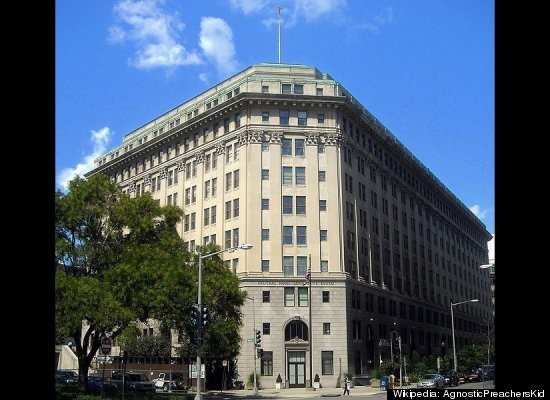 The Home Owner's Loan Corporation
The Home Owner's Loan Corporation
The Home Owner's Loan Corporation, inaugurated in 1933, arrested the collapse of the mortgage markets. Giving banks long-term government bonds in return for their toxic assets, the HOLC took the bad debt off the books of the banks, refinancing one-fifth of all U.S. mortgages, and injecting much needed liquidity into the U.S. mortgage market. The free fall of housing prices stopped. Yet the HOLC, with its twenty percent foreclosure rate, could only stanch the fall of the markets. To put America's housing markets on a sound footing the whole mortgage system would have to be rebuilt.
 The Federal Housing Administration
The Federal Housing Administration
In 1934, the Federal Housing Administration (FHA) rolled out an audacious plan to remake, from the ground up, the entire way Americans borrowed. Unlike the other New Deal housing programs, the FHA didn't directly build anything, neither did it directly lend money. Lenders would chip into an insurance pool, organized by but not paid for by the federal government, and if there was a default on a mortgage, the lender would be paid out of the pool. No longer would homeowners borrow on balloon notes for a few years. Instead they could borrow for 15 or 20 years ― a period of time that bankers had previously thought was an immoral length of time to keep a borrower in debt.
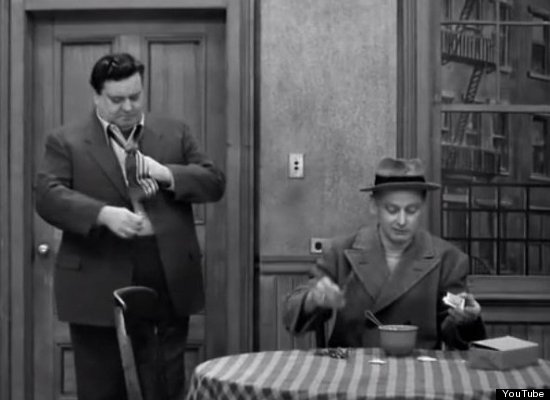 Suburban bliss
Suburban bliss
Americans longed for comfort and stability. If the monotonous suburbs looked "like Russia with money" as 1950s intellectuals claimed, then that money made all the difference, even if that money were borrowed.
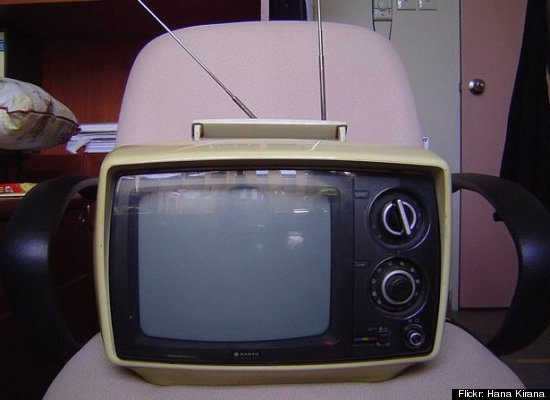 Buying televisions
Buying televisions
While many Boomers remember their parents wheeling that new Zenith into the living room, few know how their parents paid for it. That first television set, around 1950, was bought by most people on credit. Americans didn't have $400 for a television, but they could borrow it. In the first year TVs were on the market, only 0.02 percent of all households had one. Two years later, in 1948, they still cost $440 ― not including installation of that rooftop aerial, but credit made it possible for Americans to buy them. By 1955 two-thirds of households had a nice black-and-white.
 Borrowing from Bloomingdales
Borrowing from Bloomingdales
Bloomingdale's launched the first credit-card-like lending programs shortly before World War II, but it wasn't until after the war that they came to become commonplace. The "permanent budget account," as it was called, combined the pre-war installment credit and charge account programs into one. Buyers didn't have to pay off their bills every month, but in return they had to pay the store interest. This may seem obvious to us today, but at the time it was radical innovation. My favorite ad from this period shows a young Miss Smith trading her wartime uniform for a fashionable dress. The advertisement claims that Miss Smith is "never over-spent, never under-dressed."
 Diner's Club
Diner's Club
While many of us think that the Diner's Club was the first credit card, in many ways it was an also ran to the now forgotten permanent budget account. Historians circulate an anecdote that in 1950, Diner's Club founder Frank McNamara, realizing he'd forgotten his wallet while enjoying a fine New York steak dinner, thought to himself, "Why should people be limited to spending what they are carrying in cash, instead of being able to spend what they can afford?" More likely, in fact, is that when Frank McNamara returned from New York he got the idea from listening to his wife on the car ride home. (It would not be until the early 1970s that Mrs. Frank McNamara, a married woman considered an economic dependent, could apply for credit in her own name.) If a Mr. McNamara could use his Diner's Club card at a few select New York supper clubs like the Copa and the Latin Quarter, Mrs. McNamara could use a charge card in nearly every department store in the entire country.
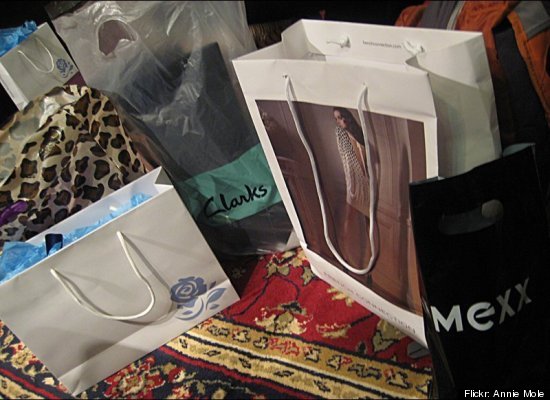 Shopping sprees
Shopping sprees
Credit cards in the 1950s and 60s could not be used in very many places. Take, for instance, the adventures of one of the greatest credit card frauds of the 1950s, Joseph Miraglia, who blew $10,000 on a Carte Blanche card in 1959. A $73 a week clerk from the Lower East Side, Miraglia applied for the card on a fluke and was surprised when he received it. Beginning with the Waldorf in Manhattan, Miraglia hit Montreal, Las Vegas, and Havana before running out of steam. He bought fur coats, fine wines, dogs, meals, suits, and even silk shirts from the same tailor as Cary Grant. With only the cash Miraglia won at the craps tables and some checks he wrote against the card, he lived, as he said, "like a millionaire's son." Yet while Joe could spend $10,000 to live like a millionaire, it would have been nearly impossible for him to spend $10,000 to live like a middle-class person -- much less a working-class guy from a Lower East Side tenement.
 Demise of department stores
Demise of department stores
The way we use credit cards today -- paying for groceries, fast food, and coffee -- was heralded as futuristic in the 1960s -- a hallmark of a wondrous cashless world of tomorrow! There have always been Joe's who wanted some better things, but there have not always been lenders willing to give them credit. That changed in the 1970s. the demise of department stores created a new opportunity for bank credit cards to flourish. Though most Americans' retail credit in the 1970s was still from Sears or Macy's, more shopping happened at places like K-Mart. Discounters and specialty chains had displaced the centrality of department stores. While the lower prices and deeper inventories lured shoppers away from department stores, credit was still needed, if not to solidify customer loyalty, then simply to put off until tomorrow what could not be paid for today.
 Swingers
Swingers
A 1968 sample found that only 17% of Americans had credit cards, as opposed to the 62% who had gas cards. Men who used credit cards, moreover, were disproportionately affluent, urbane, and more likely to agree with statements like "I like to think I am a bit of a swinger." The credit card reinforced a lifestyle of aspiration, for betters things and even the boss's job. Those who didn't use credit cards had more restrained lifestyles. Men without cards disproportionately believed that "hippies should be drafted," that "liquor is a curse on American life," and that "a woman's place is in the home."
 Usury laws
Usury laws
The expansion of credit cards was also checked by widespread usury laws. For the expanding credit card market, interest rate caps -- controlled by individual states -- determined the chance of either success or failure. In a seemingly insignificant case -- now called the Marquette decision -- the Supreme Court unintentionally dismantled all the usury laws of the United States. While the decision was obvious and simple, the consequences were not. An enterprising Nebraska bank had been soliciting credit cards in nearby Minnesota which had a lower interest rate cap. Naturally, the good citizens of Minnesota, and the banks of Minnesota in particular, were not happy seeing their laws undermined by Nebraska. The Supreme Court, in a unanimous decision, sided with Nebraska. Since residents of Minnesota could legally go to Nebraska and borrow money there, the residents of Minnesota should not be penalized, as Justice William Brennan wrote, for "the convenience of modern mail." Without state sovereignty over interest rates, South Dakota and Delaware, states not known for their financial services industries but who lacked interest rate caps, quickly drew the attention of the coastal banks. A bank in either could lend anywhere.
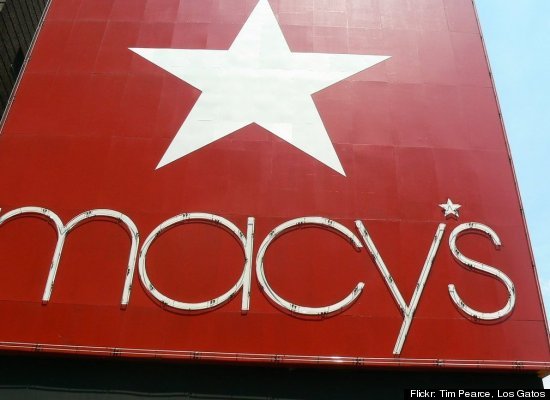 Department stores reconsider
Department stores reconsider
In the middle of the 1970s, 1/5 of the top 100 department stores had begun to accept the high-status American Express card, but most stores continued to refuse both Amex as well as Visa and Master Charge. By the end of the 1970s, however, many department stores began to reconsider their credit programs. In the fall of 1979, JC Penney was the first national department store to take VISA or Master Charge, but others soon followed. Once credit cards were accepted everywhere, however, department stores were not as special. Shoppers could now use credit not only at department stores but everywhere in American retail.
 Interest rates
Interest rates
Credit card interest rates had risen alongside all other U.S. interest rates, but when the recession ended in 1983 and all the other interest rates fell, credit cards maintained their high 23 percent rates. It is this moment, in 1983, when banks' bets on credit cards began to pay off handsomely. Rather than drop the interest rates and return to their traditionally affluent clientele, credit card lenders began to lend to riskier, and more profitable, borrowers.
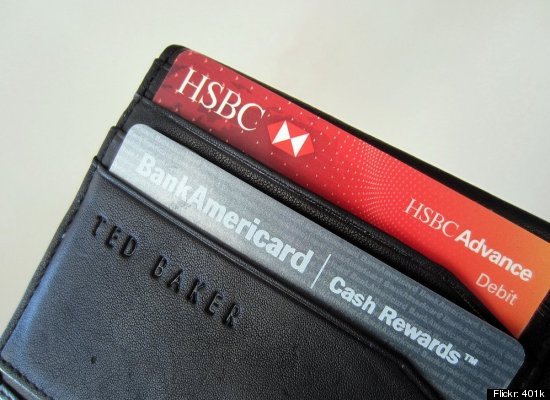 Gradable means tradable
Gradable means tradable
The slogan "If it's gradable, it's tradable" - popular in the mid-1980s - meant that anything that could be made to look like a bond - given a rating and made to produce regular coupons - could be resold. Beginning with mortgages in the 1970s and continuing on with credit cards in the late 1980s, those pesky asset-backed securities, that had disappeared in the 1930s, came back with a vengeance. The fastest growing credit card companies in the 1990s had no depositors at all--all their clients' debts were resold--just like in the 1920s.
 Economic inequality
Economic inequality
Yet as we all have learned in the past few years, these securities were not nearly as safe as Standard & Poor's made them out to be. The rising inequality of the American economy, coupled with the saving economies of China and the Middle East, concentrated a vast store of savings at the top, desperate for investment. The flood of capital into the mortgage-backed security markets created a glut of money that needed to be put somewhere. While American workers were paid less every year, the same corporations that weren't willing to raise their paychecks were willing to lend them mortgages and credit cards.
